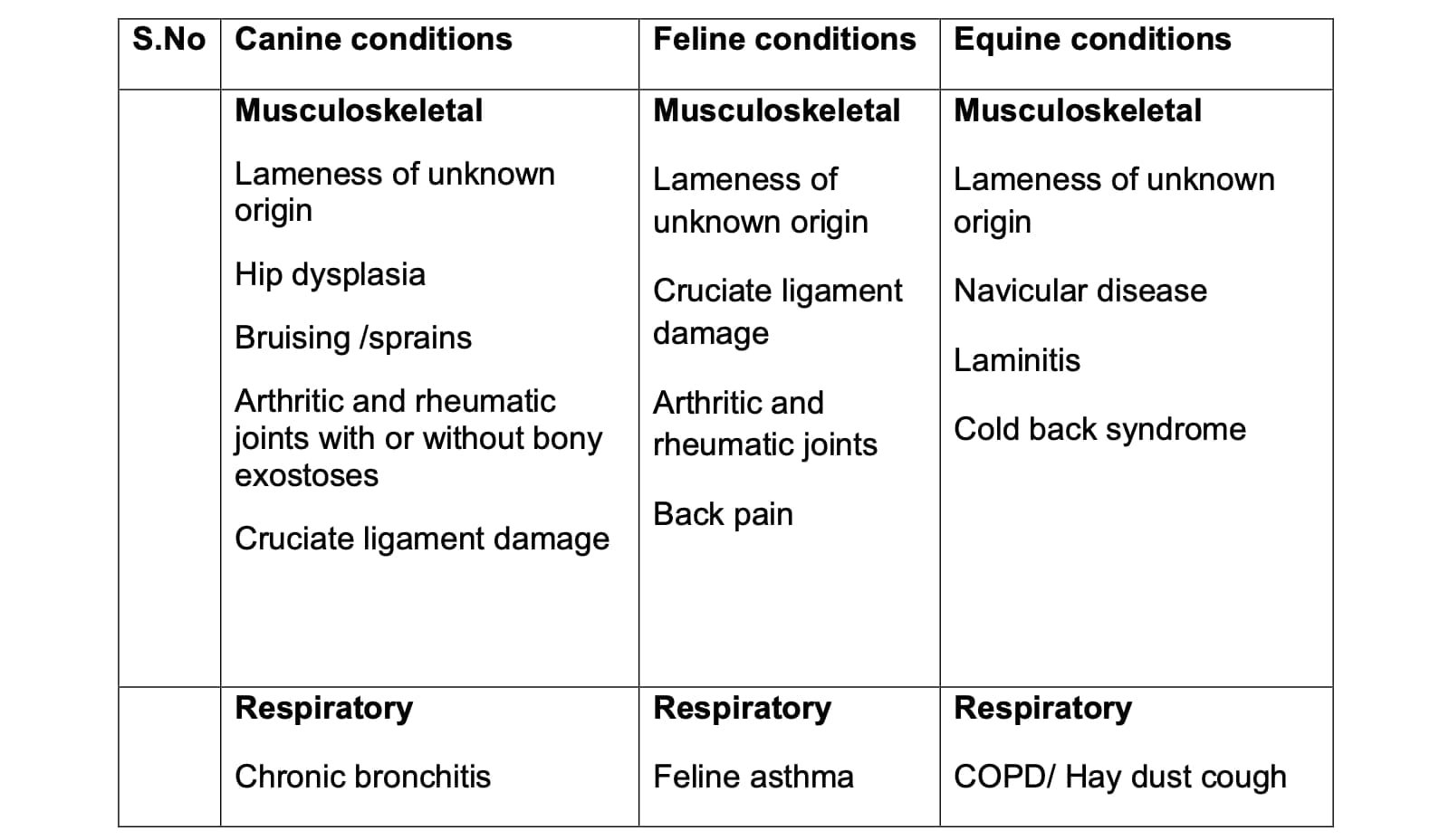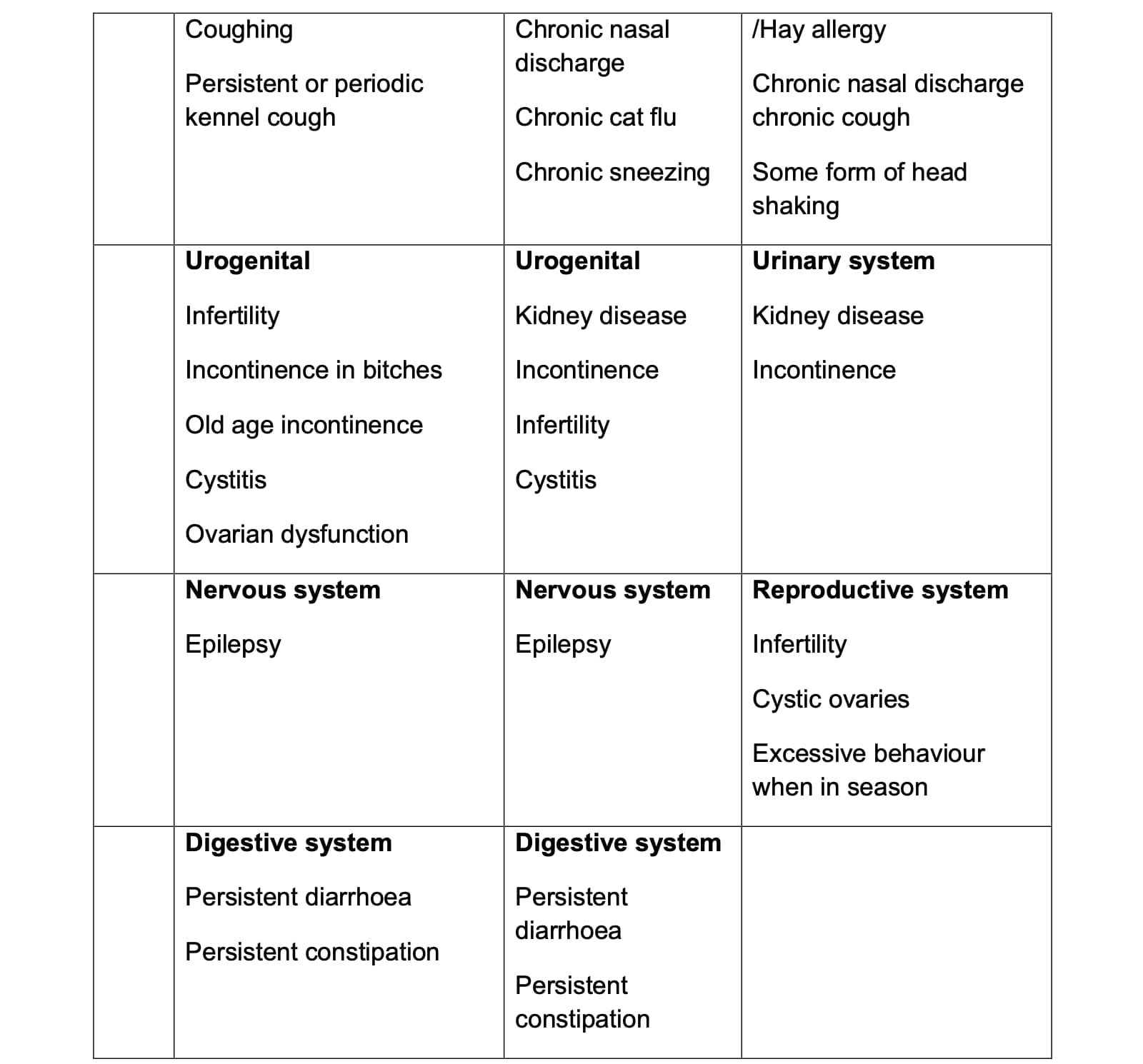TABLE OF CONTENTS
Veterinary Acupuncture
Veterinary acupuncture is based on the ancient Chinese art of acupuncture for humans which was developed up to 4,000 years ago in China. It is part of Traditional Chinese Medicine (TCM) which treats the body as a whole rather than just treating the affected parts or symptoms.
Acupuncture is a therapeutic technique used in the practice of Traditional Chinese Medicine (TCM). Other TCM therapies include electroacupuncture, moxibustion, aquapuncture and gold bead implants.
Veterinary acupuncture and acutherapy involve the examination and stimulation of specific points on the body of nonhuman animals by use of acupuncture needles, moxibustion, injections, low-level lasers, magnets, and a variety of other techniques for the diagnosis and treatment of numerous conditions in animals. Veterinary acupuncture and acutherapy are now considered an integral part of veterinary medicine.
How Acupuncture Works
Some but not all of the actions of acupuncture can be explained in terms familiar to conventional Western medicine and science. Acupuncture is thought to exert its pain- relieving effects by releasing brain chemicals such as endorphins and by blocking transmission of pain signals up the spinal cord to the brain. Function is thought to be enhanced through increased blood circulation to the area needled.
In Traditional Chinese Medicine, disease is thought to be due to an imbalance of yin and yang (i.e., loss of homeostasis) as well as abnormal flow of Qi (loosely translated to mean energy) and Blood.
Acupuncture Treatment
Acupuncture treatment involves the insertion of a varying number of needles which are left in place for varying periods of between 5 and 45 minutes. The average number of treatments is about four. Some problems may need more treatments before showing signs of improvement, but generally if there is no improvement at all after four treatments, it is unlikely that acupuncture will have an effect. Treatments are usually once a week to begin with, then at longer intervals, according to progress. Acute conditions may need more frequent treatments and chronic conditions may require booster treatments at varying intervals.
Treatments consist of one or more of the following techniques, depending on the pet’s specific problem:
- Inserting sterile acupuncture needles into the skin at various locations;
- Attaching an electroacupuncture unit to some of the needles to provide a small, non-painful electrical current; or
- Heating the acupuncture point by burning the herb “mugwort” (which smells like incense) above the point.
Most dogs don’t mind treatments, although not all cats tolerate them well. Animals that do not like acupuncture treatments are not treated. The owner remains with the pet throughout the treatment. A typical treatment schedule is two treatments per week for the first two weeks, followed by one treatment per week for one month.
Thereafter, treatments are gradually stretched out to a schedule that meets the pet’s needs, typically one treatment every one to three months.
Needles in Acupuncture
Stainless steel, solid filiform, shafted with silver or silver-plated spiral handles, 26-34G and 0.5’’ to 5.0’’ are most commonly used needles for acupuncture. For dogs the needle size recommended is 32G x 0.5’’ whereas it is 21G-24G x 1.0’’ (Yhan Li needles) for cattle.
Clinical use of Acupuncture
According to the Chinese concept the main applications of acupuncture are:
- Control of pain
- Readjustment of organ functions
- Sedation
- Antipyretic and immunological actions
- Treatment of paralysis, shock etc.
- Treatment of neuro-endocrinal disorders
- Acupuncture analgesia for surgery
- Reversal of general for surgery


Advantages of Acupuncture
- Very good specially for producing analgesia in cardiopulmonary compromised patients.
- Less cardiopulmonary, physiological changes and quickens the blood clotting immuno-stimulating.
- No side effects.
- May be useful for therapy in cases where conventional treatment methods fail.
Disadvantages of Acupuncture
- Long durations required for producing the desired effect specially analgesia.
- Unpredictable effects.
- Less muscle relaxation in surgical patient.

